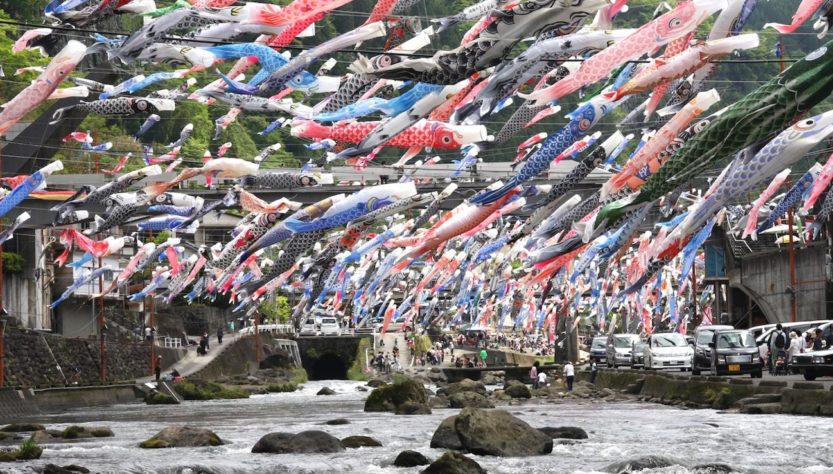So, you are about to visit Kumamoto and want to get some good insider information on the best spots that will give you an experience that goes beyond normal tourism. Don’t look any further! In this article I will introduce four spots, two from Kumamoto city and two from the Aso area, that are sure to become highlights of your trip! These spots all offer a fascinating history and unbeatable atmosphere! Let’s get right into it!
1. The hidden retro arcade of Kumamoto – Seni Tonyagai

Arcades, or the so-called shotengai, play a central role as a place for shopping, eating and drinking in most cities around Japan. These arcades are often bustling with life and in Kumamoto, the two major ones are called Kamidori and Shimotori.

But sadly, over the last 30 years, since Japan’s economy started declining and the birthrates fell, many of the smaller arcades have been turned into, so-called, “shutter streets”. A word that illustrates the permanently pulled down shutters which normally only cover the front of the store after closure.

Seni Tonyagai, located only a 10-minute ride with the tram from central Kumamoto, used to be one of these forgotten arcades left to deteriorate in the dark. This small and intimate arcade remains more or less unchanged since its establishment after the second world war. This preserved exterior and atmosphere combined is one of the reasons why young creators and entrepreneurs started to reoccupy these narrow alleyways roughly 15 years ago.

As you step closer you will find a world overflowing with detail and self-expression. Narrow alleys that are carefully decorated, all while maintaining a feeling of haphazardness. It’s almost as if you are stepping into another world that has been created by the visionary spirits who have made this place their base.
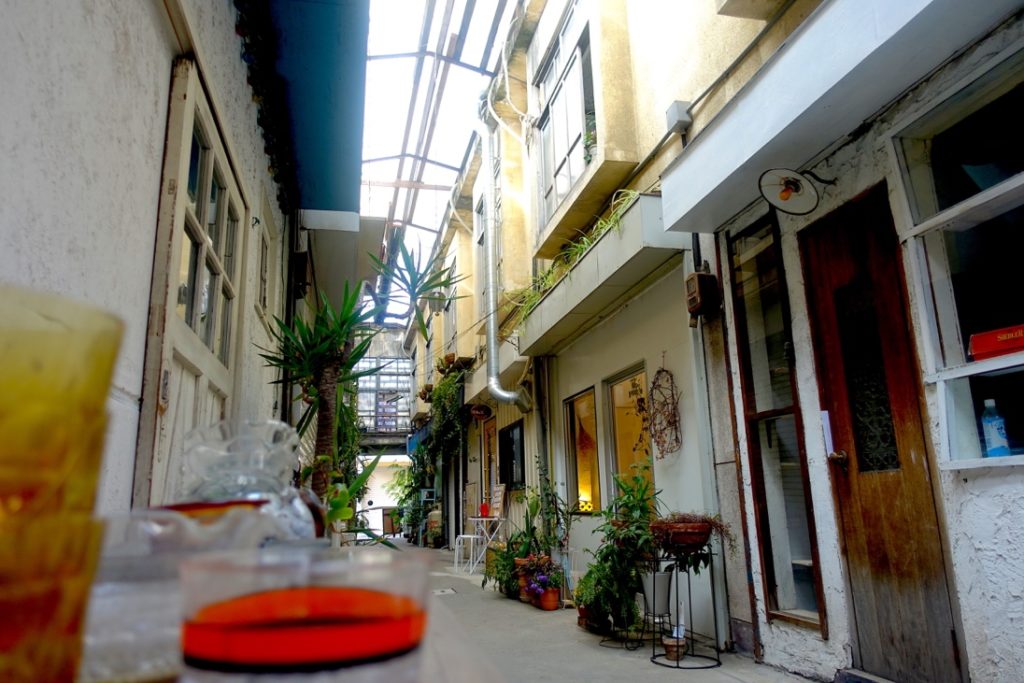
Another particular aspect of Seni Tonyagai are these narrow alleys. Once you step out from one shop, you only need to take another step to be inside the one on the opposite side. This intimate space result in a familiar and warm atmosphere.

There are quite a few original shops as well! This place called Moratorium is one of the most flavorful shops and it clearly doesn’t shy away from the extreme.

Here you can find figurines, action figures, small porcelain animals, weird dolls and almost anything you could possibly imagine. And many things you definitely could not!
The store is a retro paradise neatly crammed into a small two-story shop. If you are traveling with a big backpack, I recommend to leave it outside or you will probably end up knocking down half the store as you excitedly explore this nostalgic wonderland.

To sum it up, Seni Tonyagai is not only beautiful but also an inspirational and relaxing place where you can go to experience a completely different kind of Japanese shopping arcade. Here you can find everything from fashionable vintage shops, cute cafes, jaw-dropping retro goods, charming beauty stores, trendy design offices, inspiring galleries and much more. It can’t be stressed enough that this is an amazing area where young people in pursuit of their dreams have managed to turn a closed and abandoned arcade into a center for culture and innovation through sheer will-power and effort. It is a must-visit for anyone stopping by Kumamoto city!
2. The crème de la crème of Japanese bathing culture – Yoyasuyu
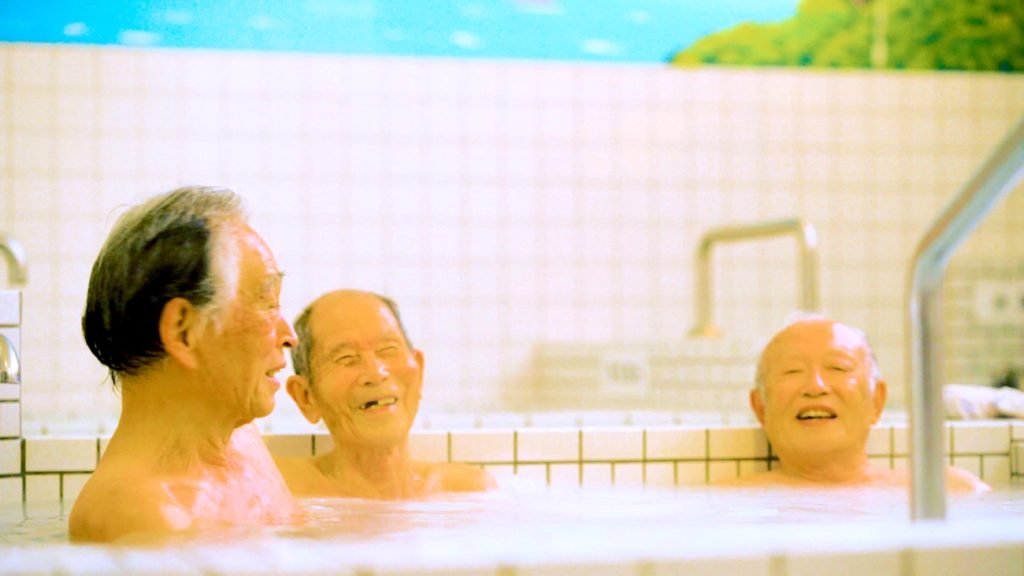
One of the most essential parts of Japanese culture is bathing. The Japanese people adore and value the precious time they spend soaked in a hot steaming bathtub. What gave the ordinary person in Japan the opportunity to soak in hot water was the introduction of public bathhouses known as sento during the Edo period (1603 – 1868).

Yoyasuyu is a small sento located slightly less than 15 minutes by foot from Kumamoto station. This traditional sento was established in 1930 and is located in the midst of Kumamoto. Yoyasuyu is famous for its retro feeling and how it encapsulates the sense of the early-mid 20th century. It is loaded with both flavor and love and shouldn’t be missed by anyone. Apart from the splendid bath experience, the owners flawless, but yet casual, hospitality is one of the reasons that people come back for more.
So, let’s jump in and have a look!
But before we check out the baths, I have one surprise for you that makes Yoyasuyu truly unique.
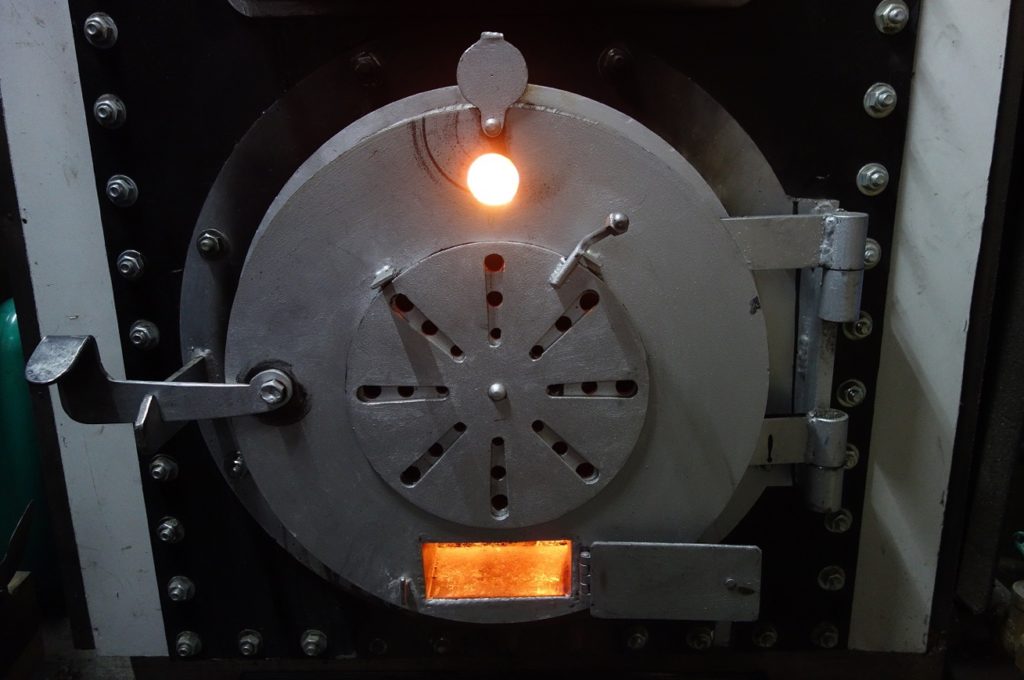
What do we have here?

Yoyasuyu is one of the few sento in the country that still heats the water by burning firewood. The owners actually venture by themselves into the mountain to gather wood that they chop and use to heat the baths. But burning wood isn’t only a tradition that they protect, in addition to producing a soft soothing heat, it is also carbon neutral which in short means that it doesn’t put a strain on the environment.
Okay, you have waited long enough, let’s take a look at the bread and butter of Yoyasuyu, the bathing area!
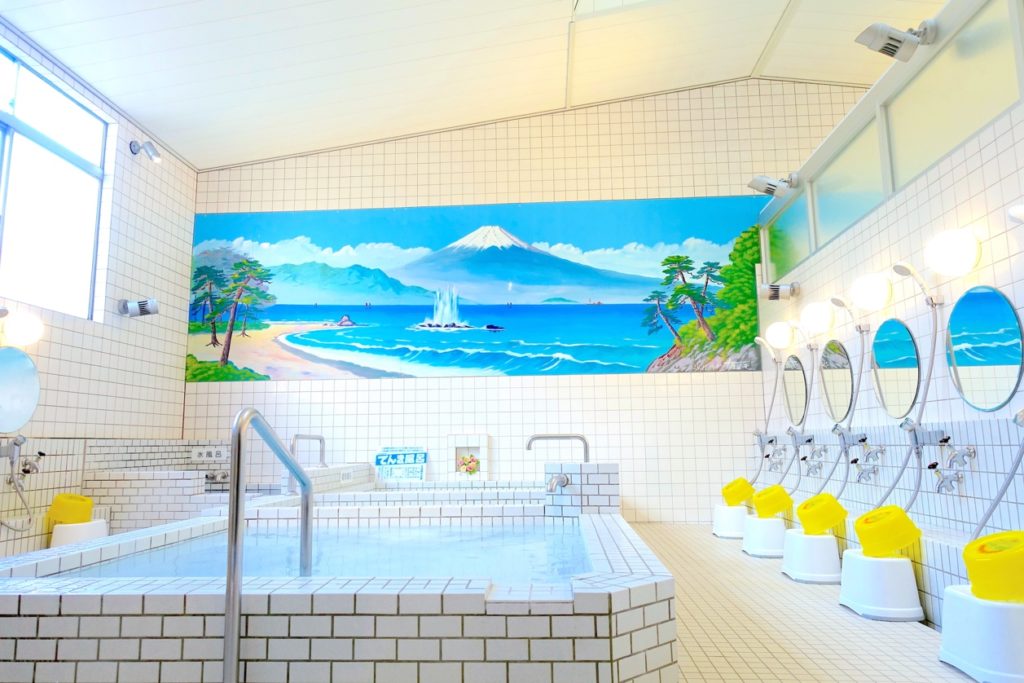
Here we have the men’s side of the bath. The first thing you might notice is the trademark of Yoyasuyu, the backdrop painting of Mt. Fuji! Many associates the sento with these wall-paintings of Mt. Fuji but the subject can differ depending on where in Japan you are and some sento don’t have any paintings at all.

This is the women’s side! Yoyasuyu is also famous for, and proud of, its cleanliness! If you have visited a few sento in your days than you will be surprised. The unrivaled cleanliness gives a very elegant and refined feeling that brings the degree of relaxation to a whole new level.
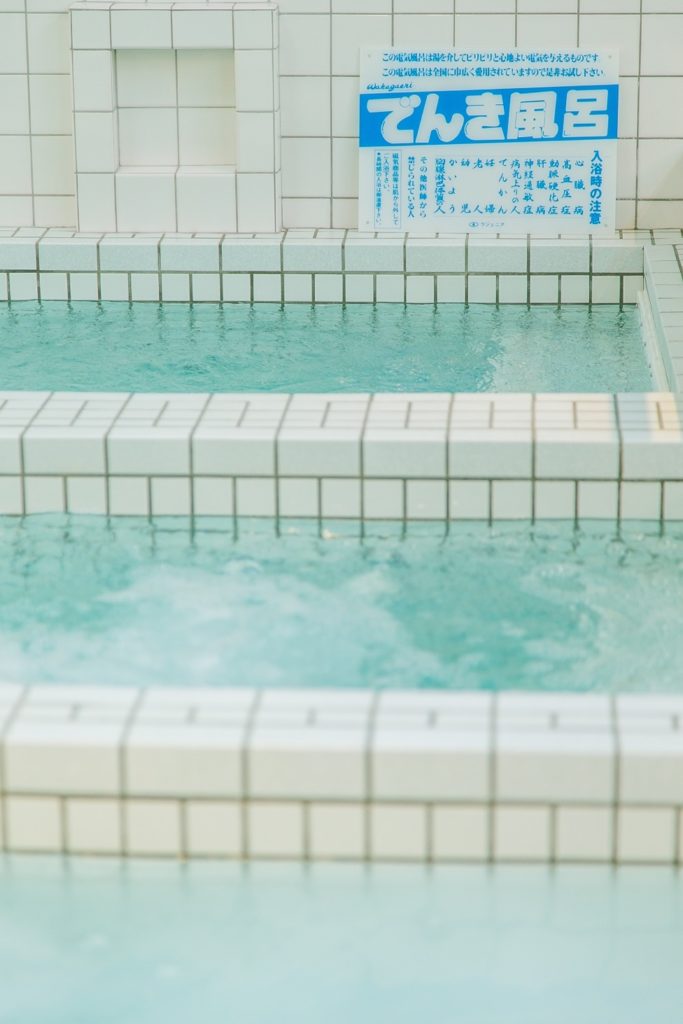
About the different baths. Yoyasuyu offers four different styles of bathtubs that allows you to customize the experience to your own liking.
The nano bath (Nanoburo), ultrasonic bubble bath (Cho-onpa jettoburo), cold bath (Mizuburo), and the electric bath (Denkiburo). Yes, you heard correctly, an electric bath! Enter with care and keep out if you have a pacemaker, a weak heart or if you’re pregnant.
With that said, the baths here are some of the best and can easily rival any fancy natural hot spring!
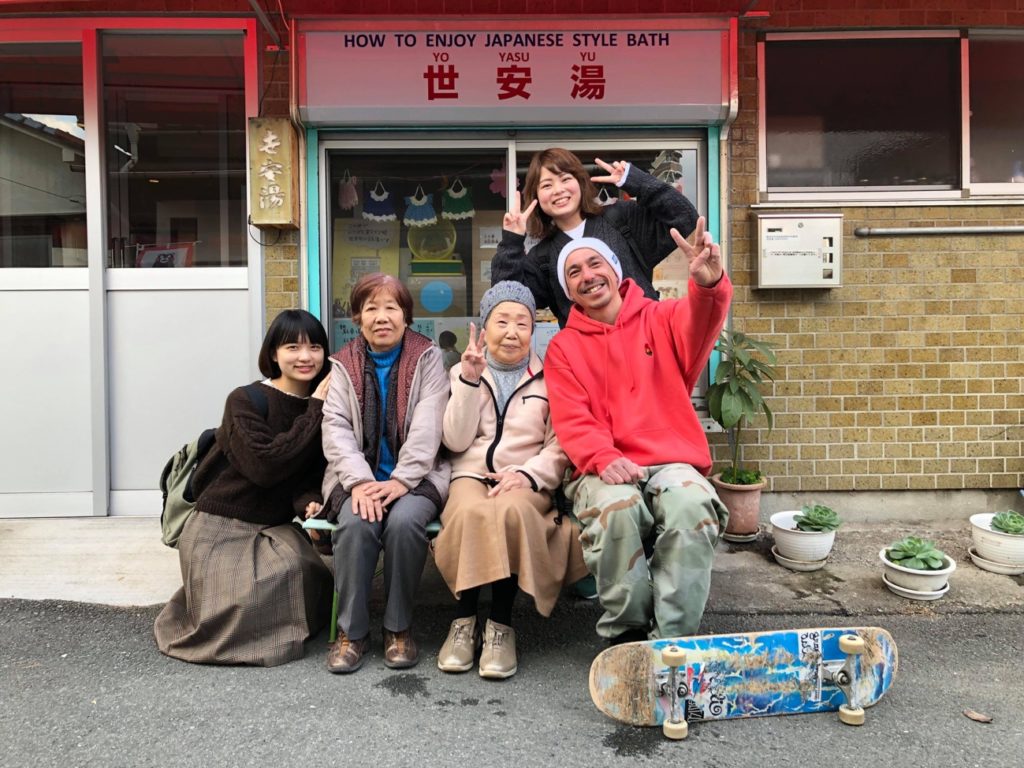
There you have it, a quick walkthrough of some sento basics and a look into the splendid Yoyasuyu. Bathing is truly at the heart of Japanese culture and there are few places that provide such a complete bath-experience as Yoyasuyu. Everything wrapped in a fantastic retro package that fits perfectly in the Kumamoto atmosphere.
Yoyasuyu
Telephone: 096-325-8348
Open hours: 16:00 – 22:00
Fixed holidays: Wednesday & Tuesday
So, let’s head north to the Aso area where our first stop will be Takamori town, home to my favorite shrine in Japan!
3. Into the realm of mysteries – Kamishikimi Kumano Imasu Shrine
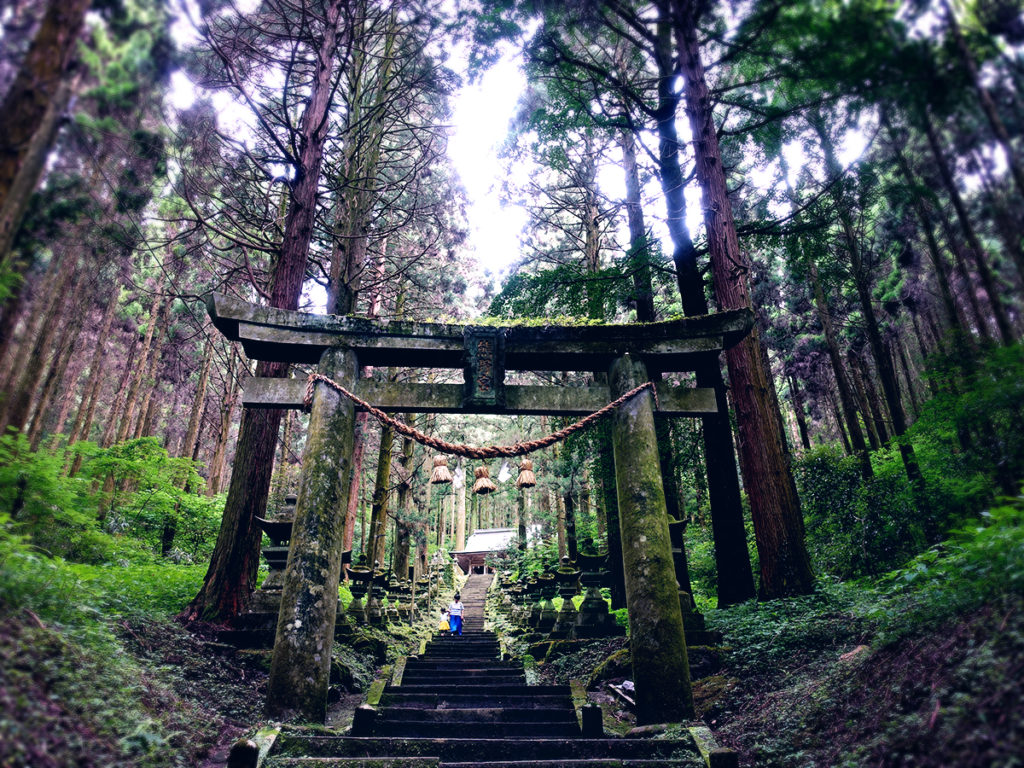
This shrine that is believed to have roots more than 1500 years back in time is best described as otherworldly. The long winding staircase (sando) of over 200 steps, lined by over 100 stone lanterns guides you deeper and deeper into a thick moss-covered forest.
Regardless of what time or season you come, Kamishikimi is sure to be breathtaking and fascinating. It’s almost slightly spooky how the forest suddenly cuts out all surrounding sound as you venture further and further into the unknown.
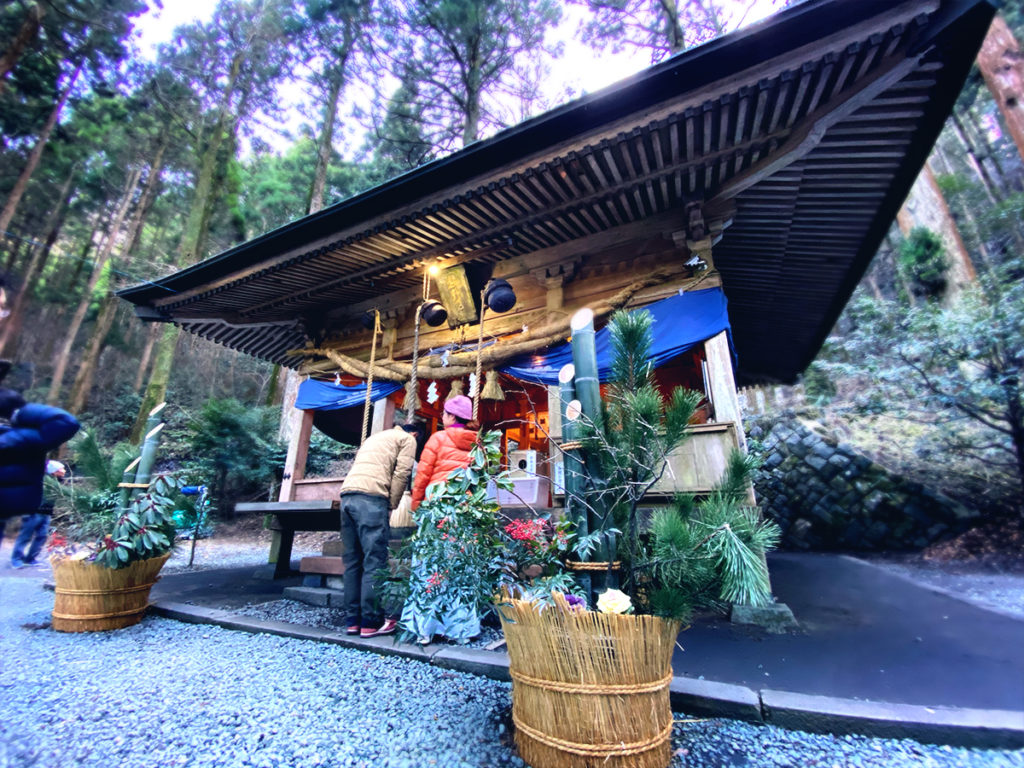
When you reach the main shrine building, don’t make the mistake of heading back, the true main event of this place lies further beyond.
Beyond the main shrine building, there is a pathway. Keep trekking for just a little bit longer and you will come upon the reason why the people of the past could feel the presence of godly powers here.
This is Ugetoiwa rock.
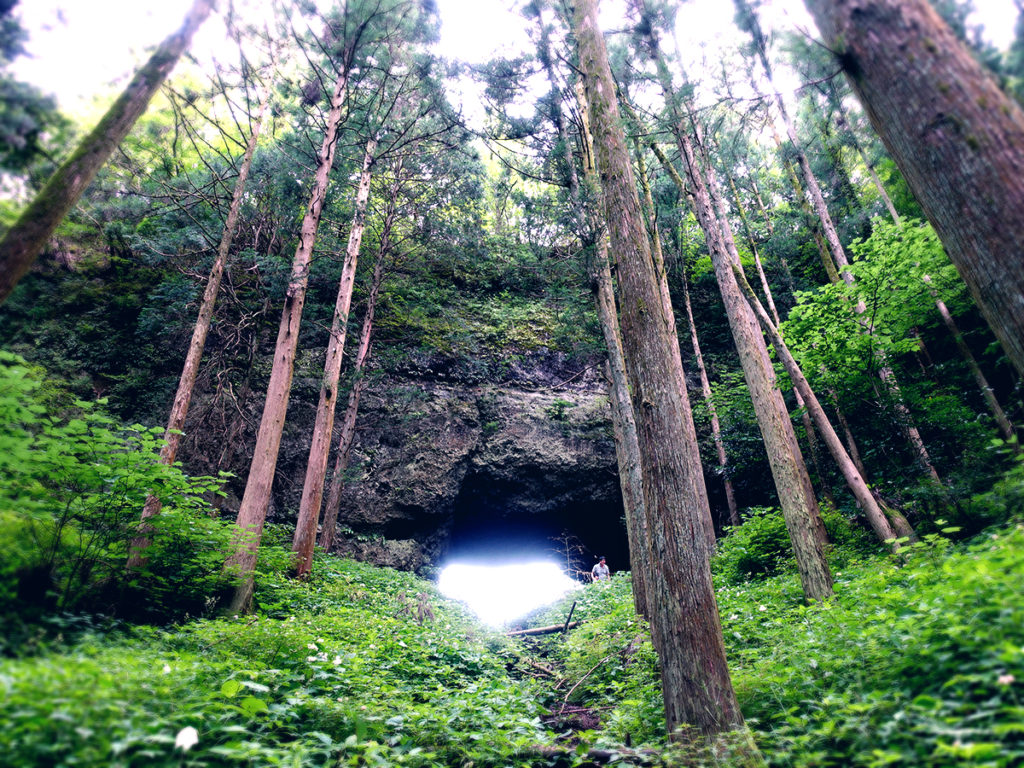
Ugetoiwa is a humongous rock with a large wind hole that sits on the top of the mountain. According to the legend, the pioneer god of Aso was practicing his bow skills and forced his servant to fetch each arrow, one at the time. Understandably, the servant grew tired of this endless running back and forth. In frustration, he gripped the arrow he was supposed to fetch between his toes and threw it back. The pioneer god of Aso became so infuriated at this that he started to use his servant as the new practice target. The scared servant ran for his life but soon arrived at the still intact Ugetoiwa. In sheer desperation, he kicked the large boulder with all his might and to his surprise, he managed to kick a big hole in the boulder through where he could escape.
Through this legend, a prayer and donation here is known to help people as they face great challenges.
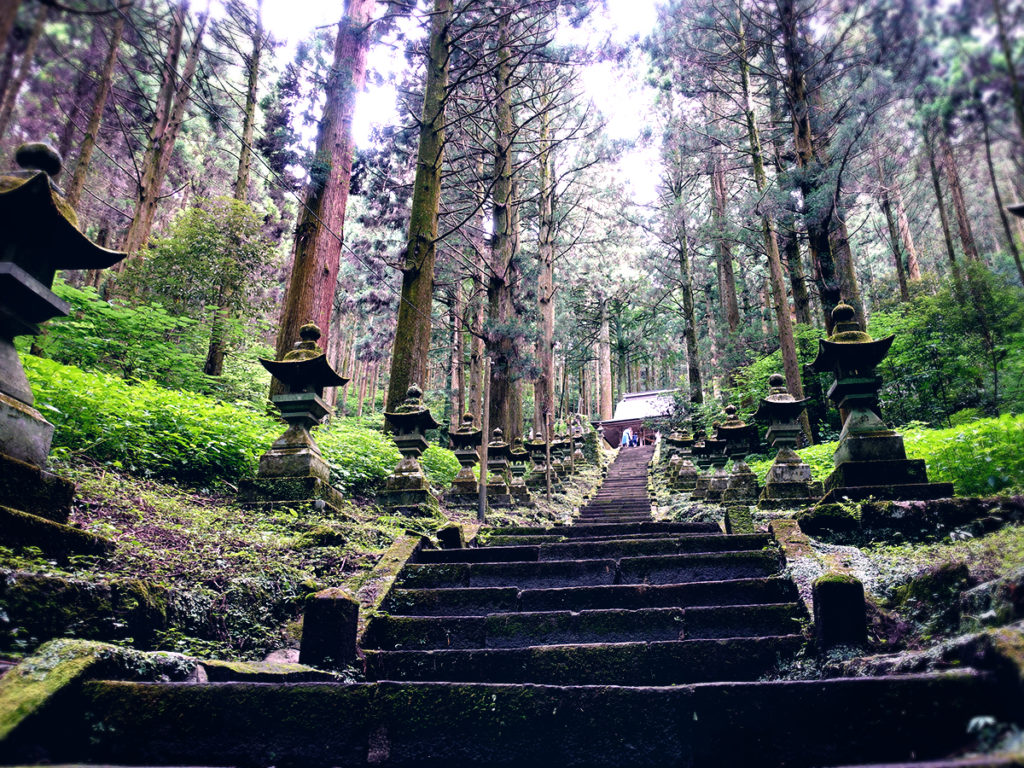
In my opinion, this is without a doubt the most atmospheric shrine in Japan and you simply must visit it at all cost! Even if you have just visited Kyoto and feel that you have seen enough temples and shrines to cover an entire life time, you won’t be dissapointed. Kamishikimi Kumano Imasu Shrine is definitely one of a kind!
Kamishikimi Kumano Imasu Shrine
Telephone: 0967-62-1111
Website: http://takaramori.com/en/spot/kanko_detail.cgi?up_spofo1=1013
4. The hidden and rustic hot spring town – Tsuetate Onsen!
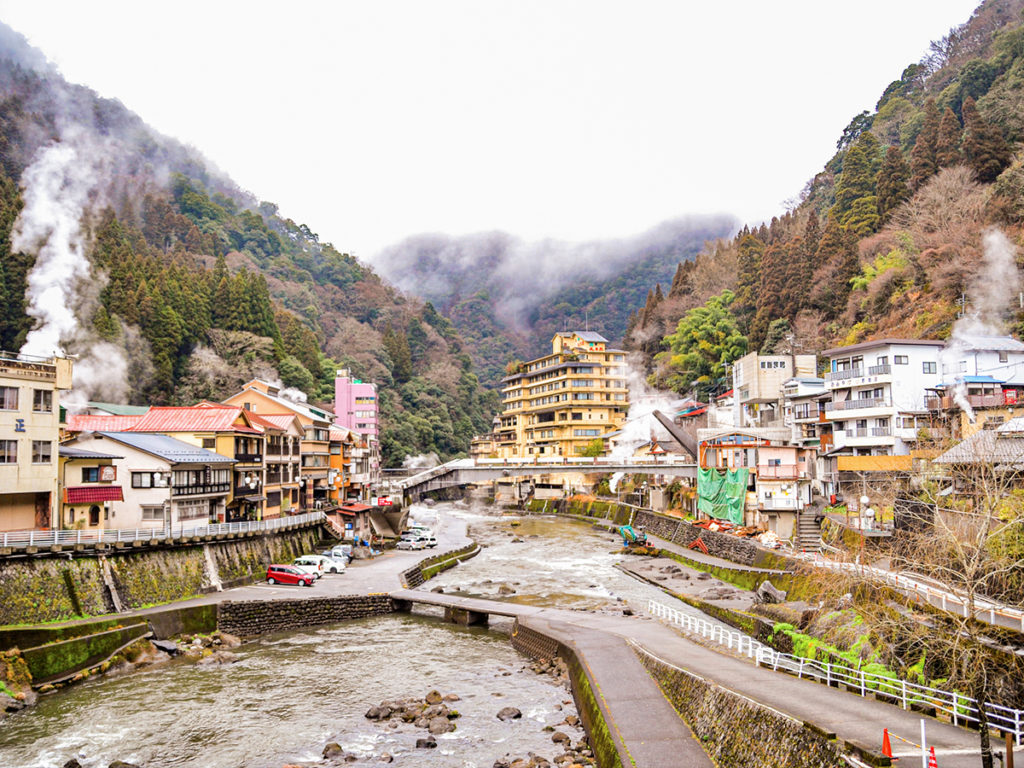
Tsuetate Onsen is the largest onsen area in Oguni and often referred to as Kyushu’s inner parlor. This onsen town sits tightly nestled in between the mountains that rise at both sides of the Tsuetate river right at the border of Kumamoto and Oita. This rustic hot spring town has a rich history stretching back an impressive 1800 years and is today home to 18 ryokans (traditional Japanese inn).
At first glance, you might be surprised by all the white smoke that rises all over town. What is this? Greenhouse gases and pollution?… No!
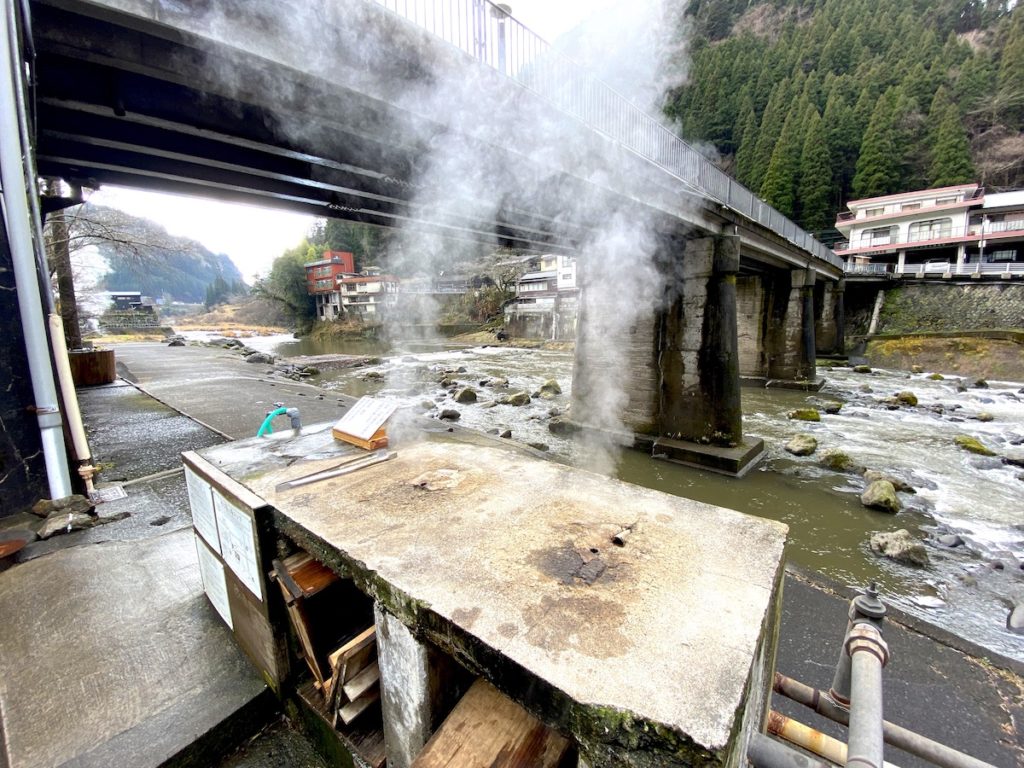
This is actually 100% natural steam that seeps out from the ground in a constant and seemingly endless stream!
Both visitors and locals gladly utilize this blessing of nature to prepare delicious steamed food!
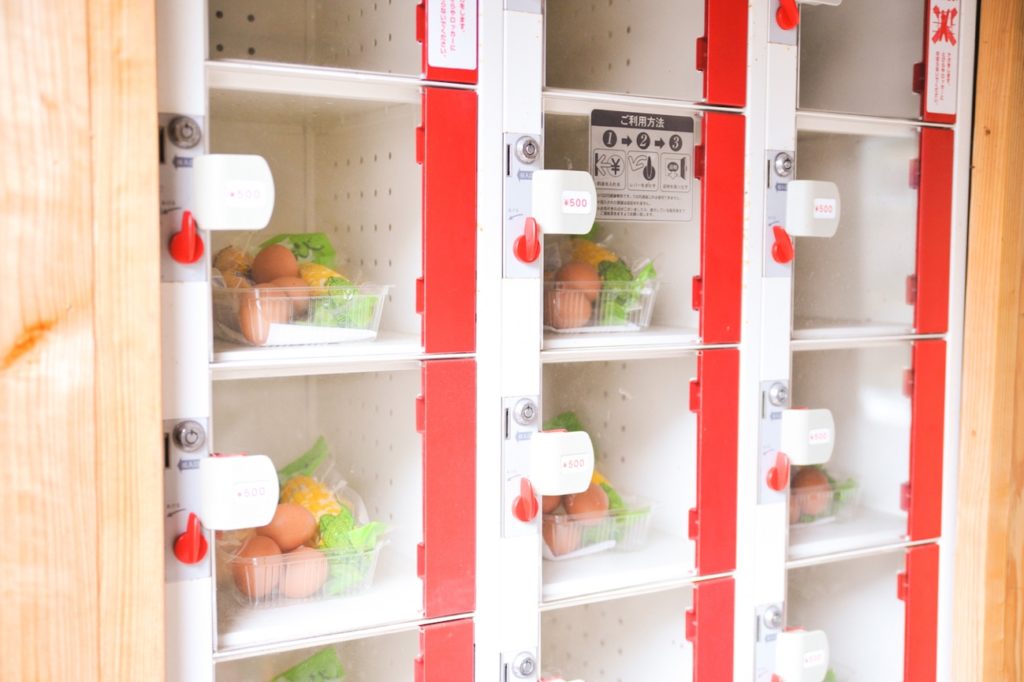
You can even find vending machines loaded up with eggs and vegetables. One set cost 500 yen so feel free to start cooking at any of the numerous steaming spots around town.
But since Tsuetate is an onsen town, the bread-and-butter is, of course, the hot springs!
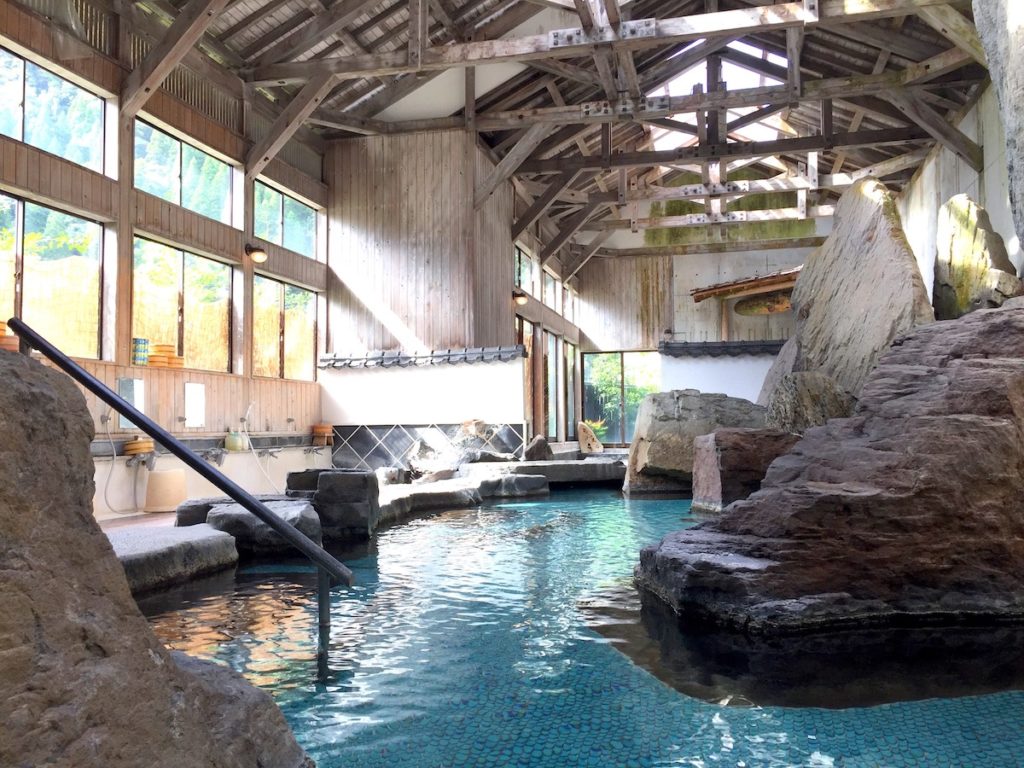
While many onsen establishments boil the water to increase temperature, recycle or add tap water to adjust the temperature, Tsuetate guarantees 100% natural hot spring water straight from the source. Furthermore, it gushes forth at an astounding temperature of 98 degrees and has some of the best water qualities in Japan. It is also thanks to this high temperature that you see steam rising from all over town and can enjoy naturally steamed food.
Furthermore, Tsuetate was originally famous for the healing properties of its water. Many people ventured here to heal sickness by staying for longer periods. The water contains high amounts of Metasilicic acid which work as a natural moisturizer and keeps your skin soft and shiny!
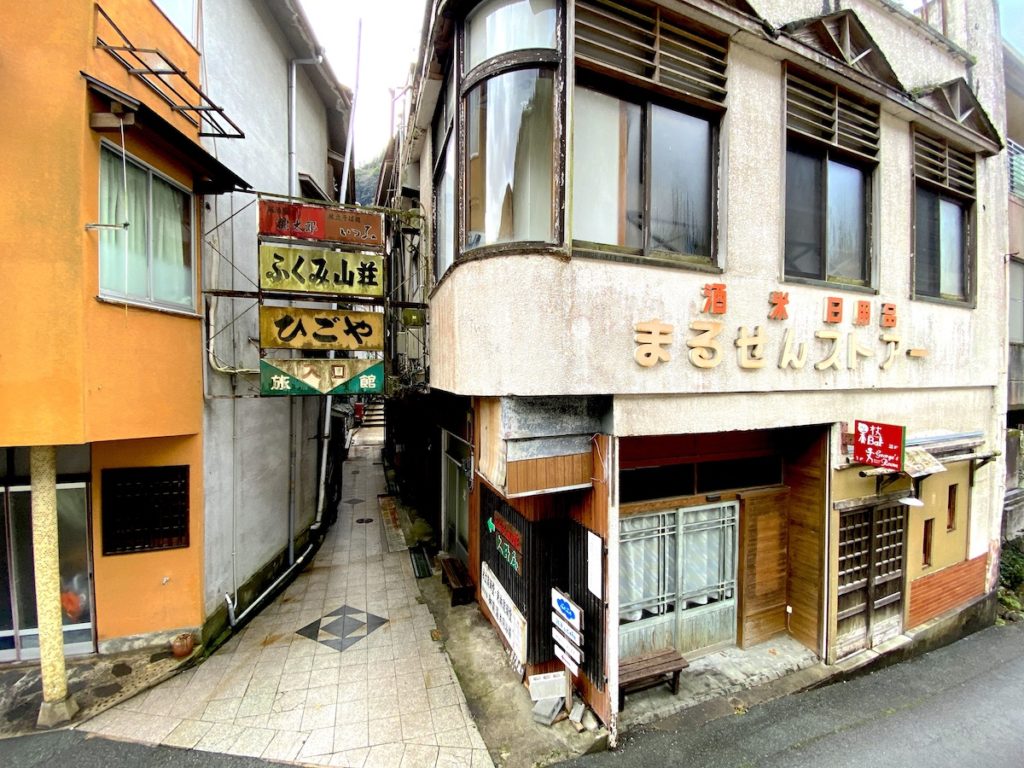
Tsuetate had its glory days after the 2nd world war and the atmosphere of the area makes it seem like time has stopped. The townscape is very different from what you typically associate with Japan but this distinctive style, often referred to as Showa (Showa period: 1926 – 1989), is still very present and beloved in Japanese society. Even though many places aim to imitate the Showa atmosphere, there are probably few that have preserved an entire town in the way that Tsuetate onsen has.
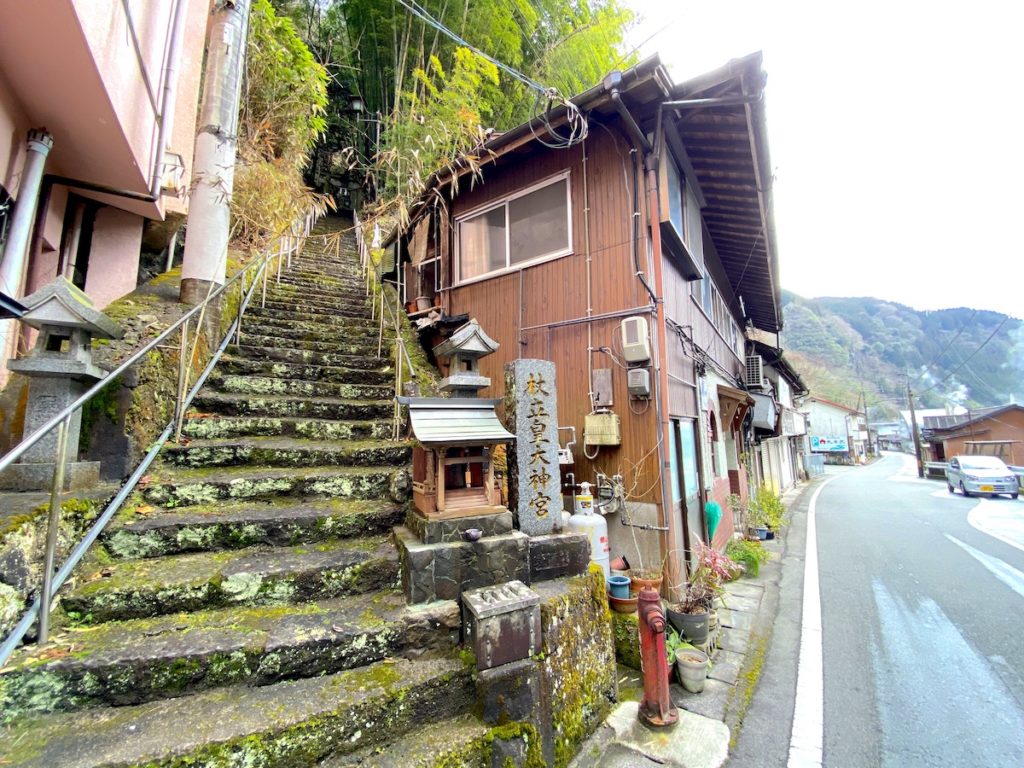
It’s a marvel to explore the area while crisscrossing back and forth over the river.
There are many small back alleys with winding staircases that guide you through a labyrinth of buildings that haphazardly seem to be stacked upon each other. Suddenly you might happen on a long and ancient-looking staircase such as this one that makes it feel like you are about to enter into a different world.
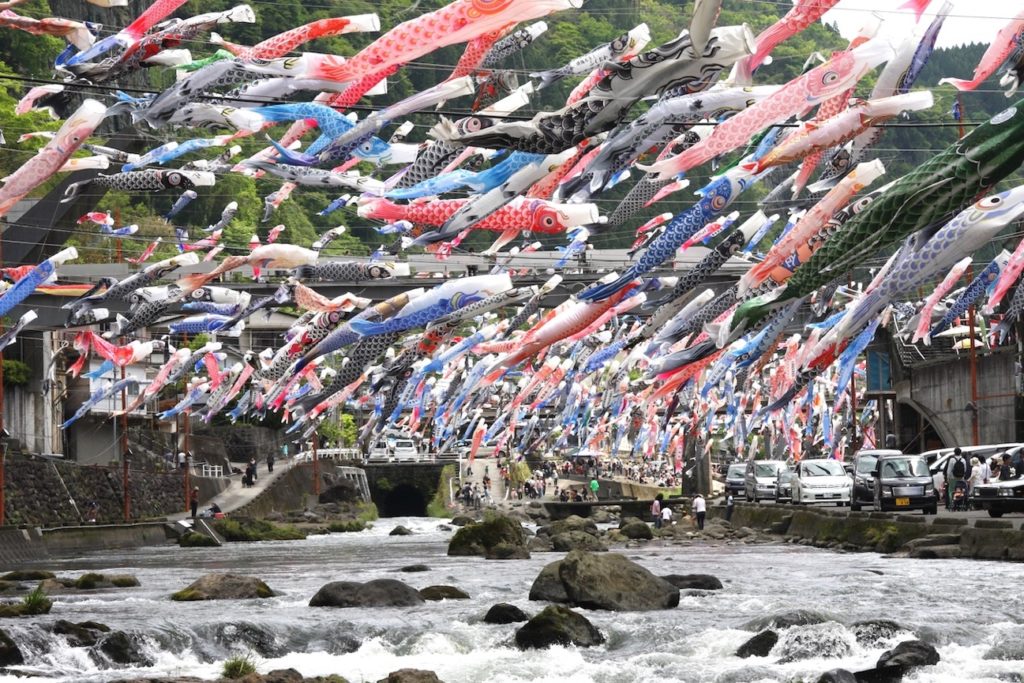
Tsuetate Onsen is one of a kind, and anyone with a love for the rustic retro feeling of the Showa period will without a doubt love this place. Sadly, the area faces many challenges. Many of the buildings need to be renovated but it’s a costly process to renovate while maintaining the current townscape. With fewer customers and no guarantee that the money you spend will come back, many are forced to reluctantly close down their business.
If you want to experience the full flavor of the post-war era of Japan while also enjoying both some of the best hot springs and ryokan in Japan at a very reasonable price, then come to Tsuetate onsen! I’m convinced that Tsuetate Onsen will capture your heart the same way it captured mine!
Tsuetate Onsen Tourism Association
Open hours: 08:00 – 18:00
Fixed holidays: None
Telephone: 0967-48-0206
Website: https://tsuetate-onsen.com/english (Partly in English)
for more about kumamoto Tourist Information…
Official Kumamoto tourism Guide
https://kumamoto.guide/en/
Facebook “Kumamoto Japan Tourism” https://www.facebook.com/pg/Kumamoto-Japan-Tourism-221432125399019

